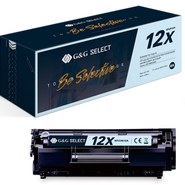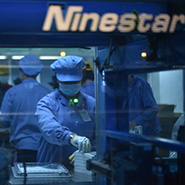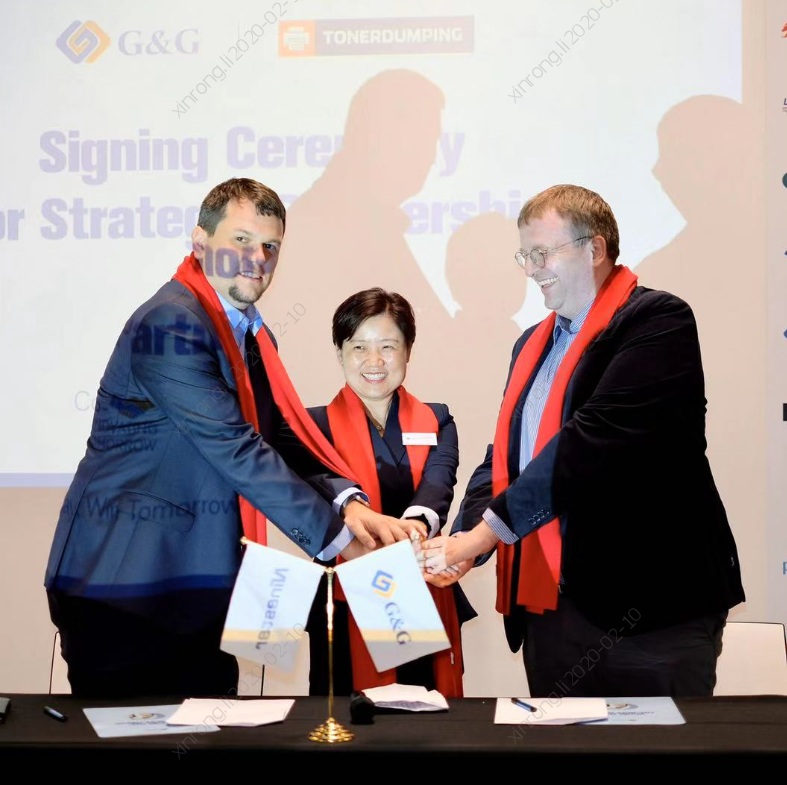Because the firm mass-produces millions of G&G-branded cartridges, you might think that it is impossible for Ninestar to closely monitor its production processes. If this is what you think, however, you are mistaken.

Since opening the doors to its first factory over 18 years ago, Ninestar’s unwavering focus has been on producing the highest quality third-party ink and toner cartridges in the world. The company understands that great products don’t just happen, however. The key to guaranteeing that G&G consumablesconsistently deliver peak performance is through precision manufacturing practices based on continuous testing and product evaluation. Each year, Ninestar reevaluates and upgrades its production centers so G&G products are as near to perfect as possible.
No product category reflects Ninestar’s commitment to excellence better than its color toner cartridges. Of all the digital imaging applications, electrophotographic color printing is arguably the most technically demanding. No step in the color toner cartridge production process can be compromised without sacrificing image quality or cartridge reliability—or both! With its history of paying attention to every detail no matter how small, Ninestar is uniquely qualified to meet the rigors that color toner supplies demand and capture a share of the market for these supplies that has been so elusive for all but the OEMs.
The Path to Perfection
Starting with a humble 1,000 square meter factory nearly two decades ago, Ninestar now occupies a sprawling giant industry park that covers over 450,000 square meters. Ninestar has invested heavily in this state-of-the-art campus and has developed the most modern production lines in the third-party supplies industry. By investing billions of yuan, Ninestar has established itself as the aftermarket’s most advanced manufacturer and its G&G products have set the industry’s gold standard for performance.
The key for Ninestar to produce its superior G&G color cartridges has been the development of cutting-edge industrial processes. Every facet of the firm’s color toner cartridge manufacturing procedure has been meticulously scrutinized. From the intake of raw materials through the automation of certain critical cartridge manufacturing processes to the inspection of the final finished product and its packaging and shipping, each link of the production chain is constantly monitored and upgraded as need.
Ninestar recognizes that any G&G cartridge is only as good as the raw materials used to make it. Thus, as noted in our previous articles, all of the toners, drums, and other components used in G&G color toner cartridges are highly engineered and designed specifically to work together. All raw materials undergo thorough testing and must meet the same exacting standards from batch to batch to ensure that each G&G cartridge always performs flawlessly.
Leveraging its state-of-the-art research-and-development assets, Ninestar’s materials engineers employ the latest measuring instruments and testing equipment to inspect and analyze all incoming raw materials. The goal is to qualify each individual component and ensure that there is no deviation in quality. Pre-production analysis includes extensive match testing of OPCs, doctor and wiper blades, and the various rollers along with the CMYK toners. Before they will be placed on the production line, it must be determined that all of the components that will be in a G&G color toner cartridge can hold up to even the harshest conditions.
Standardization is a cornerstone of Ninestar’s production process. In addition to complying with ISO manufacturing standards, each item on any Ninestar assembly line producing the same SKU must be identical. Leaving nothing to chance, only the firm’s most seasoned workers are allowed to staff Ninestar’s color toner cartridge lines. Each technician on the color line has a year or more experience. These highly-trained line workers visually inspect every element that goes into G&G color consumables and they are qualified to use Ninestar’svarious propriety tools to assemble cartridges. At various points, the techs test the production quality of a cartridge as it is being put together.
Automation is also key to Ninestar’s success. Once a cartridge reaches a certain level of assembly, it is isolated and an automatic toner filling process is employed. After it is filled, the cartridge is subjected to a vacuum pressure test to detect any leaks. The veteran line technicians then seal each cartridge and specialized equipment is used again to test and inspect the cartridge for leaks.
Before being placed into antistatic bags and moisture-proof packaging for shipment, every G&G color toner cartridge undergoes a print test prior to leaving the production line. In addition, between 2% and 5% of any production batch is tested,depending on the customer’s requirements. Batch testingincludes a 200-page test print run. Other post-production testing includes printing under various extreme environmentalconditions such as high heat and high humidity.
Moving Towards Full Automation
In 2012, Ninestar broke new ground in terms of manufacturing best practices when it unveiled its 12-step industrial engineering program, which it dubbed IE12. Adopted to reach a near zero failure rate for G&G color toner cartridges, IE12 revolutionized the remanufacturing of color toner cartridges. Ninestar continues to employ many of the manufacturing techniques that it developed as part of the IE12 initiative. Today, however, the firm is taking an even bolder step as it pioneers full-automated cartridge production.
Despite methodically monitoring all of the links in its manual production chain, the firm has concluded that weaknesses are inevitable. There will always be some variation from one human worker to the next. To ensure consistency in the production of each and every cartridge, full automation is required.
Ninestar began investing in automation in 2012. Initially, the company developed semi-automatic processes such as the filling of toner cartridges described above. As the move towards automation gathered steam, more processes were automated. Today, much of Ninestar’s ink cartridge production has been automated and a couple of fully automated color toner cartridge workshops have come on line. In our next article, we will detail how Ninestar will employ robotics and other smart production technologies to move into the future and further penetrate the color toner cartridge market.


